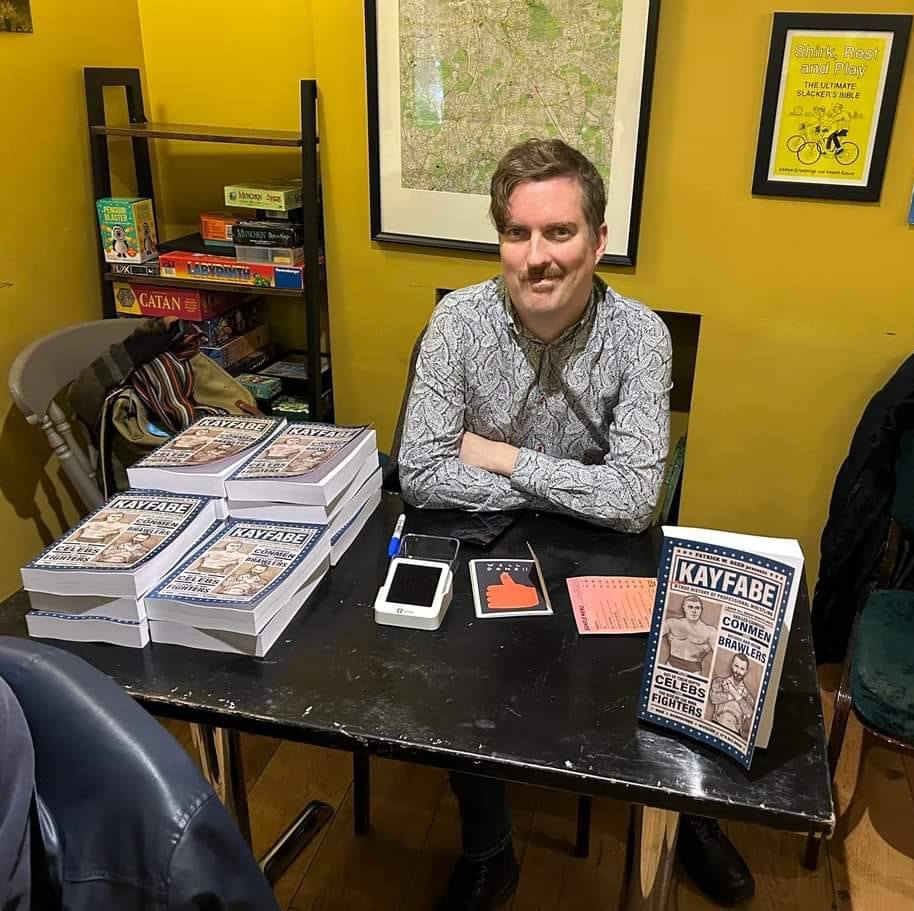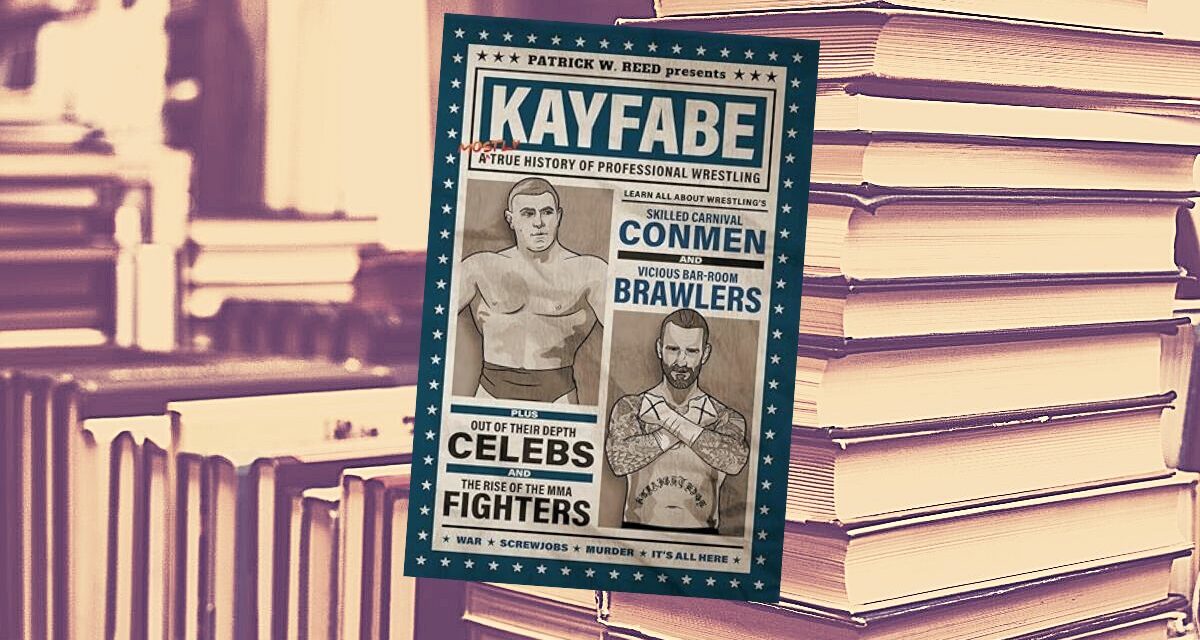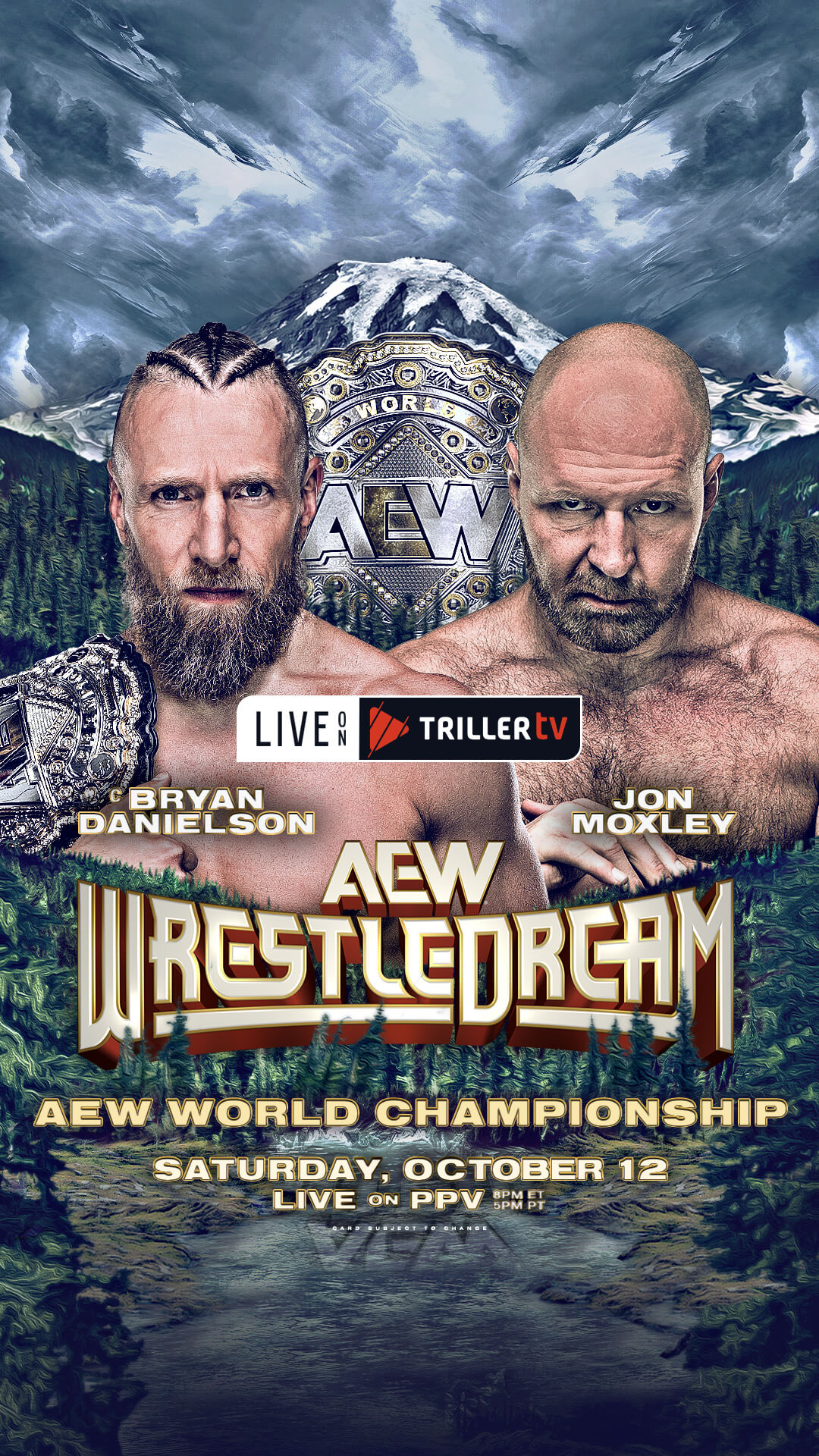Bored out of his mind during the COVID-19 pandemic, writer Patrick W. Reed started a project he didn’t realize would become his version of wrestling history.
The result was Kayfabe: A Mostly True History of Professional Wrestling, a book that boldly takes a deep dive into all regions of wrestling and the current views of professional wrestling.
Self-published, Reed’s description of Kayfabe on Amazon reads:
Kayfabe: A Mostly True History of Professional Wrestling is the story of how professional wrestling evolved from humble roots as a folk sport into an intricate and unique performance art, and a global billion dollar industry. It’s a history that takes in America’s Wild West, the Music Halls of Victorian London, the circuses of P.T. Barnum, the golden age of television, the genesis of Mixed Martial Arts, all the way to the dizzying heights of WWE’s Wrestlemania and AEW’s All-In. As befitting a story with roots in Vaudeville Theatre, it’s full of twists, turns, surprises, myth-making and half-truths, with walk-on parts from some of the biggest names in sports and entertainment over the last two hundred years, and explains how wrestling went from a carnival con to a billion dollar business.
I have both read and spoken to Reed about the book, and I must say that he knows what wrestling is all about.
Reed initially just wanted something to do to keep his mind going, which was a blog about professional wrestling. He quickly realized that the more he read about it, the more he wrote, the more it needed to be something more.
“I just didn’t think there was an existing wrestling history that was focused on kayfabe and why wrestling became a work and things like that,” Reed told SlamWrestling.net.
The result is a whopping 540 pages of goodness.
This is his first book; he has written in the past but not to this scale. Reed said that writing while the whole world paused helped him dial in and hone into the history. He benefited heavily from having more time on his hands.
“Whenever I tried writing anything before, something would come up, and I would get so busy or kind of lose my way, whereas this one, I was able to structure it a lot better,” Reed said. “I think that was the matter of having time; that was something the lockdown had given me.”
Before COVID-19 put the world on hold, Reed had his own go at wrestling. He was trained by many different people, including “Hollywood” Dirty South of Channel Islands World Wrestling. When he realized the physical part wasn’t for him, he turned to writing — eventually calling himself “The Wrestling Oddjobsman.” He was a referee, a booker, and is currently a commissioner for Channel Islands World Wrestling.
While writing and researching, Reed emphasizes the importance of determining what should be kept in or out of his book. Although he found many different pieces of information in newspapers, websites, and books, he had to keep much of it out for the direction to be consistent. In his work, Reed included much information on the British independent scene, the decline of European wrestling, the migration of wrestling stars to the United States, promoter Jack Curley and the intertwined history between mixed martial arts and professional wrestling.

Patrick Reed
For his template, he took inspiration from the English writer Peter Ackroyd. Reed found the way Ackroyd wrote his historical biographies fascinating, and saw some parallels to wrestling history. He also tried to emulate filmmaker Werner Herzog for his scene-changing style, in this case, changing from one wrestling territory to another.
When he realized it was going to be a book, Reed’s goal was for readers to grasp that wrestling has many different forms and has been like that for a long time. He wants the book to help readers understand the history and a guide for what wrestling has become and what it will look like in the future.
“Wrestling history, as a whole, is a navigation between real and fake entertainment, and it’s never going to stop; that’s what makes professional wrestling unique in its own way,” concluded Reed.
A MINI REVIEW
For some context, I was a fan during my childhood, but I left the wrestling world because I pursued passions in other sports. I kept up with wrestling here and there and slowly found myself back. As someone who missed a lot of wrestling history and wanted to learn more, I gained a better understanding of how professional wrestling works and why people have so many different views of today’s wrestling.
As someone who has competed in mixed martial arts, I was really fascinated by how many connections the wrestling world had with MMA — it does mention CM Punk’s atrocious UFC run. It was a very humbling read for me.
The history book does a great job of educating the wrestling world, as it touches upon many different sections of wrestling, from eras to different wrestling regions. Something I wish the book touched more on is the period after wrestling got involved with social media—only because I think it is important when talking about the history of the sport.
Reed did a great job with this, and I hope he takes advantage of all the research he’s gained and creates a follow-up with whatever he left out of this one.
Kayfabe: A Mostly True History of Professional Wrestling will appeal to new wrestling fans and those unfamiliar with the British independent scene and wrestling’s connection with mixed martial arts.
RELATED LINKS
- Buy Kayfabe: A Mostly True History of Professional Wrestling at Amazon.com or Amazon.ca
- SlamWrestling Master Book List


